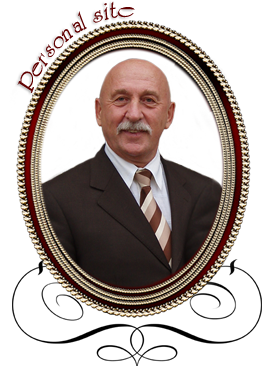Humorous Essays Based on students' memories
"All have died
except for those who are alive, and those whom we remember"Confucius
- From the author
- Review of a book by O.P.Syedyshev "The Guys"
- Copyright
The Guys
Essay 1. How I became a student
Essay 2. Mini-dorm
Essay 3. Arkasha
Essay 4. Ditto
Essay 5. Vagram
Essay 6. Eugene
Essay 7. Slava Sizikov
Essay 8. Batya
Essay 9. Tolik and Vagram
Essay 10. Ilgam and Otari
Essay 11. Petya Kozlov and a pipe
Essay 12. Golubev and Sasha Plokhikh
Essay 13. Serezha Sherbinin
Essay 14. Operative surgery exam
Essay 15. Striptease of Leada Syrkasheva
Essay 17. Pseudo wedding
Essay 18. How I was a trade union organi...
Essay 19. Anatomy
Essay 20. #118 Group
Essay 21. RW
Essay 22. Brothers Romashov
Essay 23. Pharmakology
Essay 24. Sambo
Essay 25. Dimka the Wine-Maker
Essay 26. Brewery
Essay 27. Delicacy
Essay 28. Muster
Essay 29. Festival
Essay 30. Cant wait to get married
Essay 31. Beer at lectures
Essay 32. Examinations
Essay 33. The murder will out
Essay 34. An accident
Essay 35. Vendetta
Essay 36. A lesson to remember for a lif...
Essay 38. A wedding ring
Essay 40. How different all of them are
Essay 41. Product #2
Essay 42. A guitar
Essay 43. A stranger in medicine
Essay 44. Oh, sports - You are life!
Essay 45. Canalis nasolacrimalis
Essay 46. Young Communist League (Komsom...
Essay 47. Unus - one out of five
Essay 48. His Majesty photographer
Essay 49. Three tablets of aminazine
Essay 50. "Nothern Lights"
Essay 51. Gentlemen of luck
Essay 52. Brother-2
Essay 53. Three thanks
Essay 54. Superstitious Beliefs
Essay 56. Satanic Grin
Essay 57. 21 Gurgles
Essay 58. Triplets
Essay 59. Pilau on Issyk Kul
Essay 60. Is speculation business or not...
Essay 61. Bitter Sugar
Essay 63. Cream Of Wheat
Essay 64. Feeling Of Pride
Essay 65. Was It Love?
Essay 67. Examination Paper #13
Essay 68. The Devil of Adventurism
Essay 69. Sketching Characters
Essay 70. An Excursion
Essay 71. Winter examinations
Essay 72. Stierlitz is no match for them...
Essay 73. Inhale through your mouth, ple...
Essay 74. Hitler kaputt!
Essay 75. A second-year student
Essay 76. Mistakes should be paid for!
Essay 77. Four letters
Essay 78. Prince of Imereti
Essay 79. There are too few workers and ...
Essay 80. A pood of salt
Essay 81. A Prankster
Essay 82. Let's Man The Barricades!
Essay 83. Now A Kiss!
Essay 84. Briefs
Essay 85. A Miracle!
Essay 86. A mouse!.. in a hairdo? How ve...
Essay 87. A Born Obstetrician
Essay 88. International Children's Day
Essay 91. Here is the one for you, fasci...
Essay 94. A sight for sore eyes
Essay 96. REAR
Essay 97. And you are a gambler, Paramos...
Essay 98. An Ode to Pilav
Essay 99. Always hungry
Essay 100. Dudes
Essay 114. The night before
Essay 119. An autograph
Essay 130. Déjà vu
Essay 137. Twelve
Essay 141. A password is needed
Essay 142. Home brew
Essay 143. Mind what you say
Essay 144. Experimenters
Essay 145. An autograph
Essay 146. Hydrocele
Essay 147. Clip on the back of the head
Essay 148. Al Qasr
Essay 149. We were optimists...
Essay 150. Despotic and wilful person
Essay 151. With a sickle at the balls
Essay 152. Liquidation
Essay 153. Resonance
Essay 154. Shock therapy
Essay 155. Good luck of Victor Kiss
Essay 156. Herd instinct
Essay 157. Cond'omer
Essay 159. The Gypsy Baron
Essay 160. SI system
Essay 161. Foie gras
Essay 162. Divine disposition
Essay 163. Chizhik-Pyzhik*
Essay 164. Culinary terrorist act
Essay 172. At the world's end
Essay 173. Rupture
After graduation
Essay 37 Whyte chrysanthemums
Essay 55 We Are the Eleventh! So What?
Essay 62 Feinzilberg's Mistake
Essay 90 Betwixt and Between...
Essay 92 Those who are drowning are to ...
Essay 93 People, be happy
Essay 116 Here's a fine how d'ye do!
Essay 131 Feminine logic
Essay 132 Bimbo and, pardon, balls
Essay 133 Forty years later
Essay 134 Product #2 again
Essay 136 Striptease of Fomitch
Essay 138 Love and gastric ulcer
Essay 139 A victim of essays
Essay 140 Sleep!
Essay 158 Help-it's a panic
Essay 165 A Hen
Essay 166 The first vacation
Essay 167 Tails
Essay 168 PEA
Essay 169 Sochi
Essay 170 VOLGA
Essay 171 Muriuk
Essay 174 Bear's disease
Essay 175 An escape
Kitchen talks
Essay 39. A brick on the top of the head
Essay 89. Guriev Porridge (or conversati...
Essay 113. Prosperity of Russia
Essay 135. A Prescription
Beyond the Horizon
Essay 16. Its a small world
Essay 66. Paris, Paris...
Essay 95. Milan is a Lucrative City
Essay 102. A Look and Something
Essay 103. Tango 'Magnolia'
Essay 110. Buddha is smiling
Essay 128. Red Light District
Essay 73. Inhale through your mouth, please







Associate professor G.L.Khasis
The plot was kindly given by Elena Zhuk.
15 October, 2011
© Copyright: Oleg Syedyshev, 2012
Publishing licence #21206220646
Translated by Viktoria Potykinato content ↑





